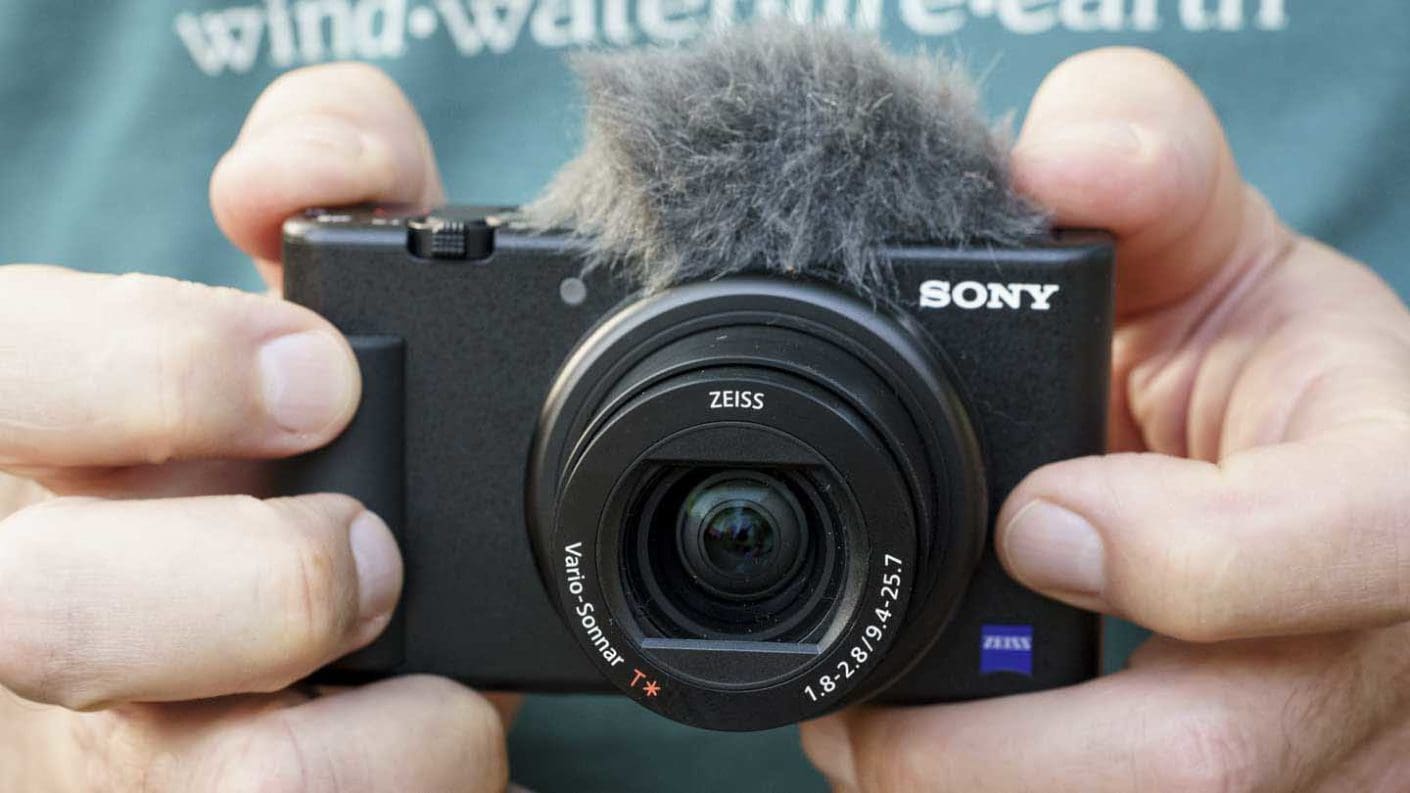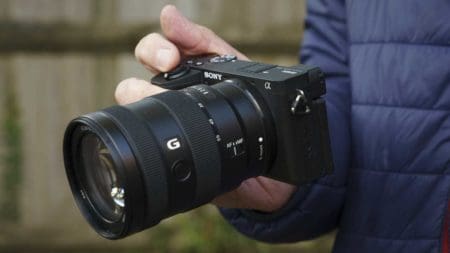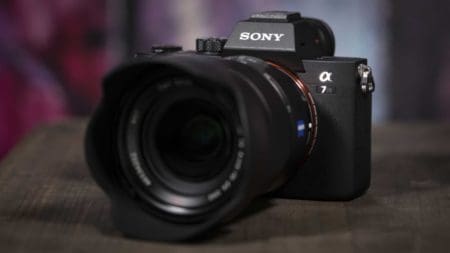If you’re looking for the best beginner camera, it’s worth considering Sony’s different options. If you’re looking to make the jump from shooting with your smartphone to using a camera with a bigger sensor, Sony is a great brand to consider. From its powerful RX series of compact and bridge cameras up to its pioneering Sony A7 series cameras, Sony has an entry point for everyone. Like the best Canon cameras for beginners and best Nikon cameras for beginners we recently reviewed, the best Sony cameras for beginners are those that incorporate many of the advanced features from the company’s flagship models.
For instance, Sony cameras are well-known for their AF prowess, and many of Sony’s beginner cameras offer lightning fast and precise autofocus, along with tracking options such as Eye AF. The best Sony cameras for beginners also offer advanced video features and 4K resolution, meaning that if you are just getting to grips with vlogging and streaming there is plenty of room for you to learn and grow with your camera.
In this round-up we’ve taken a look at the best beginner Sony cameras from the company’s different ranges so that you have options depending on your priorities as a photographer. If you want resolution, you’ll probably want to consider a beginner full-frame camera from the A7 line. If extreme focal length is important to you, a bridge camera from the RX10 series is probably your best bet.
All of these recommendations are based on our tests and first-hand experience shooting with these Sony cameras. For a broader look at what the brand has to offer, check out our guide to the best Sony cameras you can buy today. For a deeper dive into the many different camera types and features available, check out our range of camera buying guides.
- Photography for beginners: essential techniques and which cameras to buy
The best Sony cameras for beginners you can buy today
Sony A6100

Specification
- Sensor: 24.2MP Exmor CMOS image sensor
- Video: 4K movie recording with full-pixel readout
- Screen: 180-degree tiltable, 3.0-type 921k-dot LCD touch screen
- Autofocus: 425 phase-detection and 425 contrast-detection AF points
Aimed at beginner photographers, the Sony A6100 offers plenty of room to grow. Its impressive feature set nearly matches the fellow APS-C format Sony A6600.
Like its sibling, it boasts internal 4K movie recording in Super 35mm format with full pixel readout without pixel binning, to capture approximately 2.4x the amount of information required for 4K movies. Budding videographers will also appreciate the integrated microphone input and built-in interval shooting.
Again, like the A6600, the A6100 incorporates a 24.2MP Exmor CMOS image sensor, the latest BIONZ X image processor and a front-end LSI. AF acquisition is lightning fast at 0.02secs via its 425 phase-detection AF points covering approximately 84% of the image area and 425 contrast-detection AF points.
Sony’s Real-time Tracking and Real-time Eye AF modes are also on-board, delivering faster and more accurate AF performance when photographing humans and animals.
£830
€900For
- Real-time Tracking and Eye AF
- 4K video
- Very fast AF
Against
- No stabilisation
- There's a mic input but no headphone port
Sony ZV-1
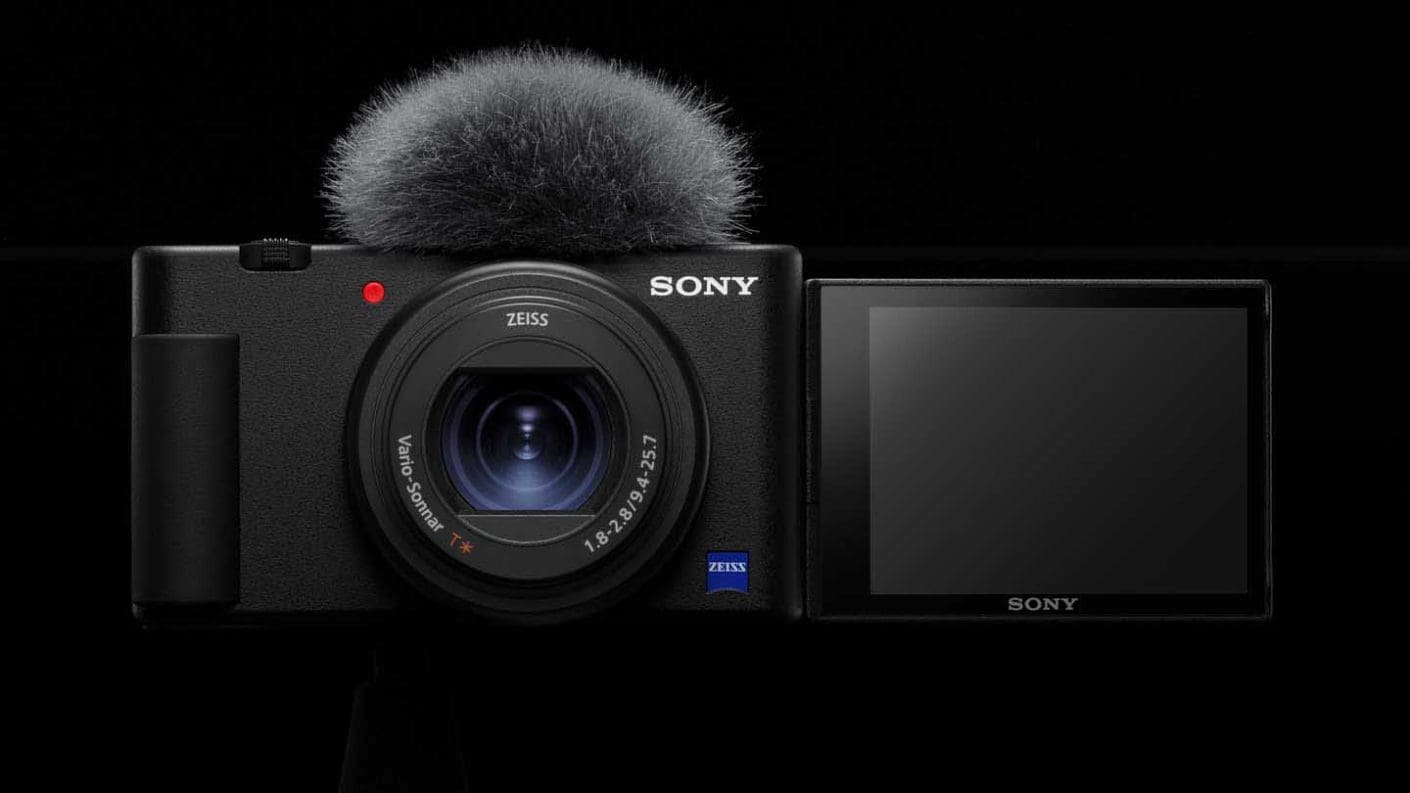
Specification
- Camera type: Compact
- Announced: 26th May 2020
- Sensor: 20.1Mp 1-inch type (13.2mm x 8.8mm) Exmor RS CMOS
- Lens: Zeiss Vario-Sonnar T* 9.4-25.7mmm (24-70mm equivalent) f/1.8-2.8
- Sensitivity range: Stills: ISO 100-25,600, Video: ISO 125-12,800
- Autofocus: 315 focal-plane phase-detection AF points, Eye AF: Humans (stills and video) or Animal (stills)
- Burst Mode: Hi: 24fps, Mid: 10fps, Low: 3fps
- Video: 4K in-body movie recording with full pixel readout and no binning, Log & Gamma options, slow-mo at up to 1000fps
- Viewfinder: No
- Screen: Vari-angle 3-inch touchscreen
- Stabilisation: Optical for stills, optical and electronic for video
- Hotshoe: Multi-interface (can connect an XLR mic via an adapter)
- Storage: SD/SDHC/SDXC
- Dimensions (WxHxD): 105.5 x 60 x 43.5mm / 4 1/4 × 2 3/8 × 1 3/4inches
- Weight: 294g with battery and SD card or body only
It used to be that most vlogging was done on a phone, but Sony aimed to change the game plans of thousands of content creators when it launched the ZV-1, a compact camera specifically designed for vloggers.
Much of the specification on the Sony ZV-1 is familiar from the Sony RX100 series of compact cameras, but there are a few notable differences to make it better for vlogging.
Inside the Sony ZV-1 is a 1-inch type stacked Exmor RS CMOS sensor with 20.1 million effective pixels. That’s a comparatively large sensor for a compact camera and makes a big impact on image quality. What’s more, the Exmor RS CMOS sensor brings phase-detection focusing – which is usually faster and more decisive than contrast detection. The ZV-1 has a total of 315 phase detection AF points which are available for use in stills and video mode.
As for video, the ZV-1 is capable of shooting 4K footage and exposure can be controlled automatically or manually.
Sound is just as important as the image quality in video and the Sony ZV-1 offers a number of options for recording audio. The easiest is to use the built-in 3-capsule microphone. This uses technology from Sony’s advanced video camera systems and there’s a Clear Voice function that can reduce background noise while making human voices clearer.
Overall, the Sony ZV-1 delivers everything a vlogger could wish for in a compact camera, and it comes with Sony’s excellent AF system. There are features to help inexperienced photographers/videographers/vloggers get good results, the exposure can be controlled automatically or manually and there’s a built-in ND filter plus Log and Gamma control. It makes it easy to produce great 4K video but lets you take control when you want to. It all adds up to a very enticing camera for vloggers.
Find the best deals on the Sony ZV-1 at Amazon UK and Amazon US.
£700
$749.99For
- Designed specifically for vloggers but also a capable stills camera
- Stabilised 4K video
- Vari-angle touchscreen
Against
- No viewfinder built-in
- The redesigned grip is best for left-handers
Sony RX100 VII
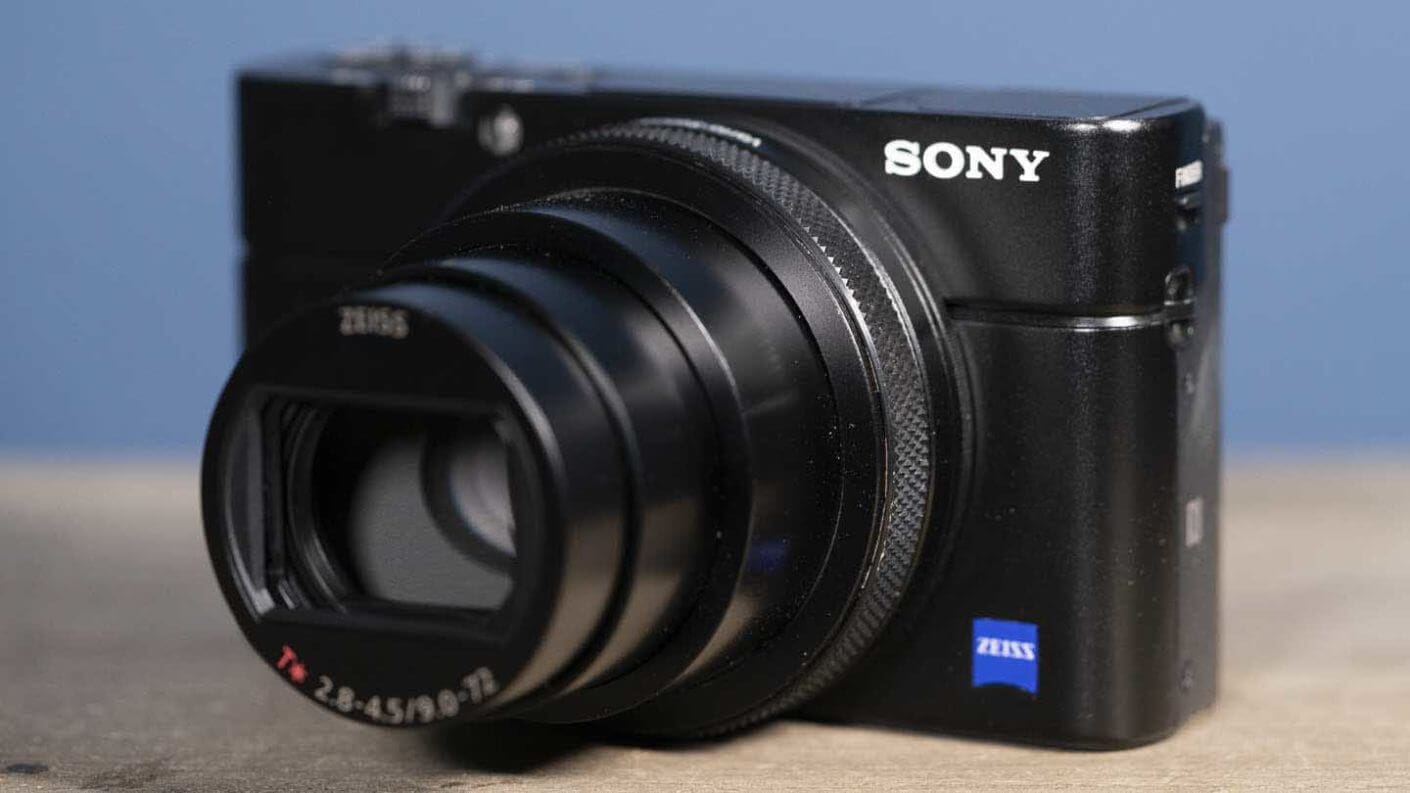
Specification
- Camera type: Compact
- Sensor: 20.1Mp 1-inch type (13.2mm x 8.8mm) Exmor RS CMOS
- Lens: ZEISS Vario-Sonnar T* 9-72mmm (24-200mm equivalent) f/2.8-4.5
- Autofocus: 357 focal-plane phase-detection and 425 contrast-detection AF points
- Burst Mode: 90fps in JPEG or Raw format in Single Burst Shooting mode
- Video: 4K in-body movie recording with full pixel readout
- Viewfinder: 0.39-inch 2,359,296-dot OLED (pop-up)
- Screen: Tilting 3-inch 921,600-dot TFT touchscreen (up 180-degrees, down 90-degrees)
- Storage: SD/SDHC/SDXC
- Dimensions (WxHxD): 101.6 x 58.1 x 42.8 mm / 4 x 2 3/8 x 1 11/16-inch
- Weight: 302g / 10.7oz with battery and SD card or 275g / 9.8oz body only
Promising ‘A9-level’ AF performance as well as 90fps single burst shooting, the RX100 VII turned a lot of heads when it was announced and reinforced Sony’s reputation as a true innovator in the market.
Inside the RX100 VII is a 1-inch, stacked 20.1-megapixel Exmor RS CMOS sensor with a DRAM chip and Sony’s Bionz X image processor. On the outside is a ZEISS Vario-Sonnar T* 24-200mmviii F2.8-4.5.
What should really get people excited, though, is the technology the RX100 VII inherits from Sony’s A9. Like the A9, the RX100 VII’s image sensor realises blackout-free shooting for a completely live view, even when continuous shooting at 20fps.
The RX100 VII also promises ‘A9-level’ AF/AE tracking performance during continuous shooting, meaning the camera performs AF/AE calculations up to 60 times per second and captures fast-moving action at 20fps with AF/AE tracking.
Sony’s Real-time Eye AF and Real-time Tracking modes also make their debut for the first time in a compact camera. With 357 focal-plane phase-detection AF points and 425 contrast-detection AF points, its AF system is among the best you will find both in a beginner camera and one that is this small.
£1200
$1198 / €1300For
- Best-in-its-class AF system
- Stabilised 4K video
- Great focal length range
Against
- Front lacks grip
- Limited use of the touchscreen functionality
Sony RX10 IV

Specification
- Sensor: One-inch, 20.1-megapixel Exmor RS CMOS
- Lens: Zeiss Vario-Sonnar T* 24-600mm (equivalent) f/2.4-4
- Autofocus: 315-point focal-plane phase-detection autofocus
- Viewfinder: 0.39-inch electronic viewfinder, 2,359,296-dots
- Screen: 3-inch, tilting, touch-sensitive, 1,440,000-dot
- Max video resolution: 4K
- Max frame rate: 24fps
Unlike most bridge cameras, the Sony RX10 IV uses a larger one-inch sensor that offers 20.1-megapixel resolution. This is combined with a 25x optical zoom (24-600mm equivalent in 35mm terms) and Sony’s powerful BIONZ X processor and front-end LSI. Mix all these together and you’ve got something which has been designed for serious performance.
What’s great about the RX10 IV is that because it copes so well with a variety of different subjects, it’s perfect for beginner photographers who haven’t yet found their niche and are exploring how to shoot a different types of images.
The RX10 IV isn’t cheap, and it might be more money than you want to splash out for a beginner camera with a fixed lens, but with such an impressive number of feature, super image quality and performance and in a lightweight body, this is not only one of the best cameras for beginners but one of the best cameras full stop.
£1499
$1698For
- Super-fast AF
- 4K video
Against
- Very high price
- Bulky
Sony A7C
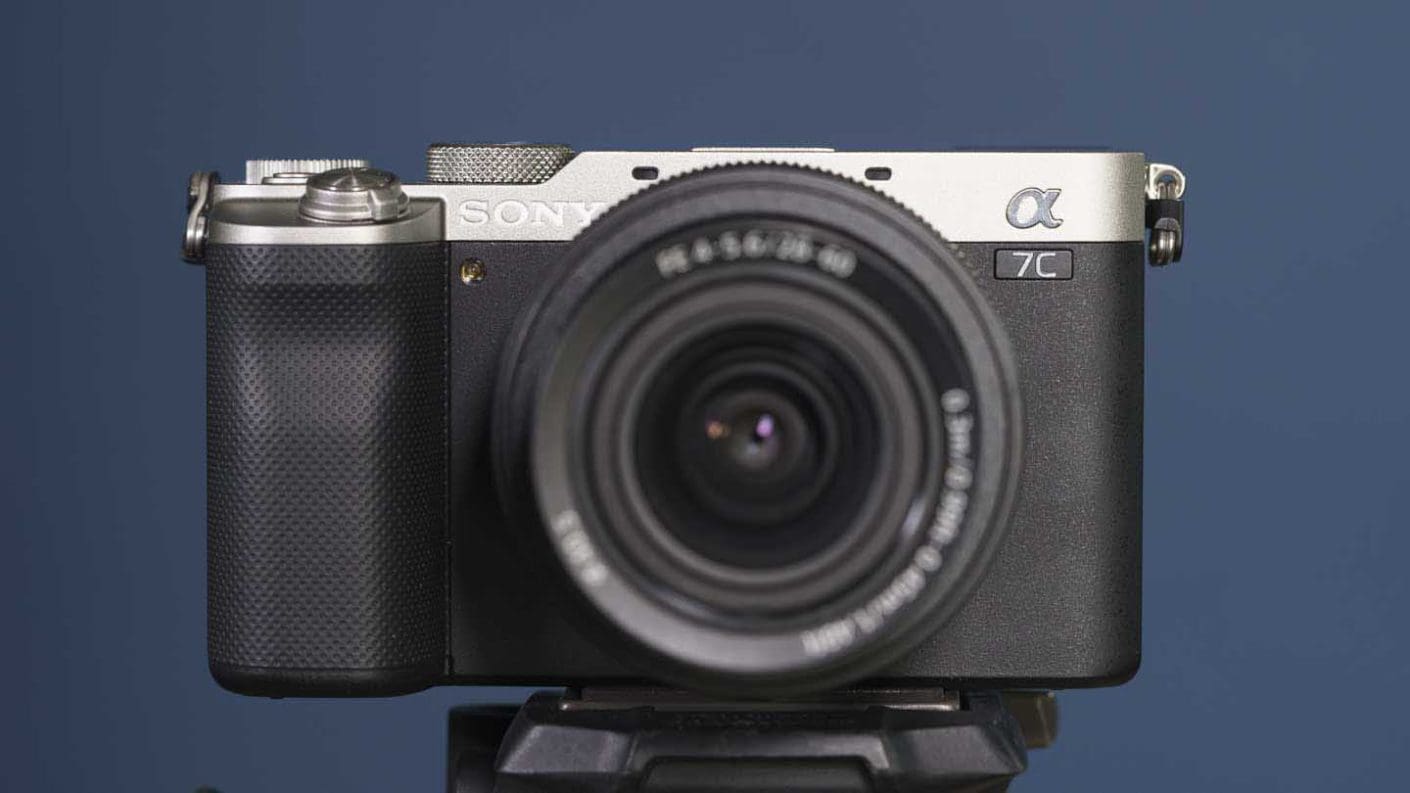
Specification
- Announced: 15th September 2020
- Camera type: Full-frame mirrorless
- Sensor: 24.2Mp Full frame (35.6×23.8mm), Exmor R CMOS sensor
- Processor: Bionz X
- Lens mount: Sony E
- Sensitivity range: ISO 100-51,200, expandable to ISO 50-204,800
- Maximum continuous shooting rate: 10fps with full AF and metering
- Video resolution: 4K: 3840 x 2160 (4:2:0, 8bit, NTSC) (Approx.) 30p (100Mbps / 60Mbps), 3840 x 2160 (4:2:0, 8bit, NTSC) (Approx.) 24p (100Mbps / 60Mbps), 3840 x 2160 (4:2:0, 8bit, PAL) (Approx.) 25p (100Mbps / 60Mbps)
- Autofocus system: Hybrid with 693 phase detection points and 425 contrast detection points
- Eye AF: Stills: Human or Animal, Video: Human
- Viewfinder: 0.39-inch 2,359,296-dot OLED electronic viewfinder
- Screen: Vari-angle 3-inch 921,600-dot vari-angle touchscreen
- Stabilisation: 5-axis in-body image stabilisation giving up to 5EV shutter speed compensation
- Storage: SD/SDHC/SDXC (UHS-I/II)
- Dimensions (W x H x D): 124.0 x 71.1 x 59.7mm / 5 x 2 7/8 x 2 3/8inches
- Weight: 509g / 1lb 2.0oz with battery and card
If you’re looking for a small full-frame camera with Sony’s excellent autofocus and noise control systems then the Sony A7C is the way to go as it’s smallest of the Sony A7-series cameras. It has a flat-topped rectangular body that makes it look similar to the Sony A6600, but there’s also a vari-angle screen rather than a tilting monitor. And inside, the A7C has the same 24Mp sensor and core features as the Sony A7 III.
Paired with the FE 28-60mm f/4-5.6 kit lens., which is a small collapsible optic, the A7C makes an attractive choice for travel and everyday photography.
However, in shrinking down the A7C, Sony also made a few compromises on the handling. There’s no joystick on the back of the camera for example, and there’s only one control dial. In addition, the electronic viewfinder is the type of unit that is more commonly found in APS-C format cameras.
While it’s great to have a vari-angle screen, if you can live without it, and don’t mind a slightly larger camera, then the Sony A7 III, which sits above the A7C in the range, makes a great alternative and costs a little less.
£1709
$1798For
- Small for a full-frame camera
- Vari-angle screen
- Excellent AF system
Against
- Limited touch-control
- Complex menu
- Underwhelming viewfinder
